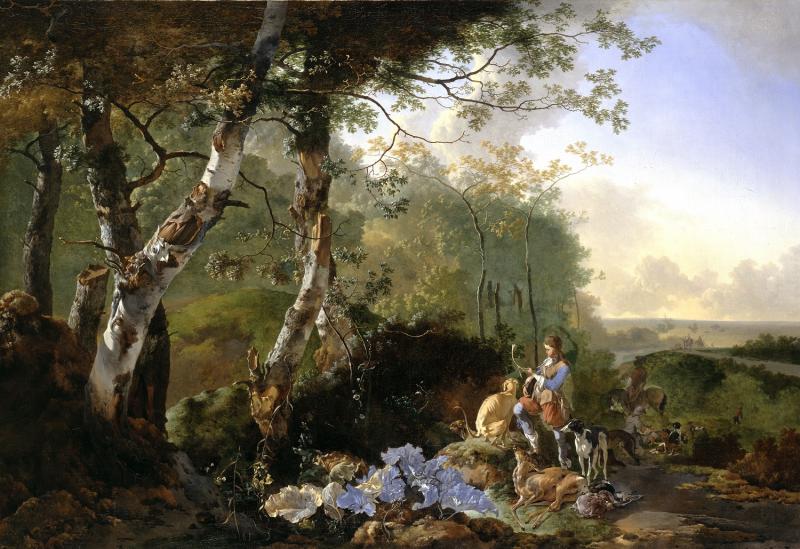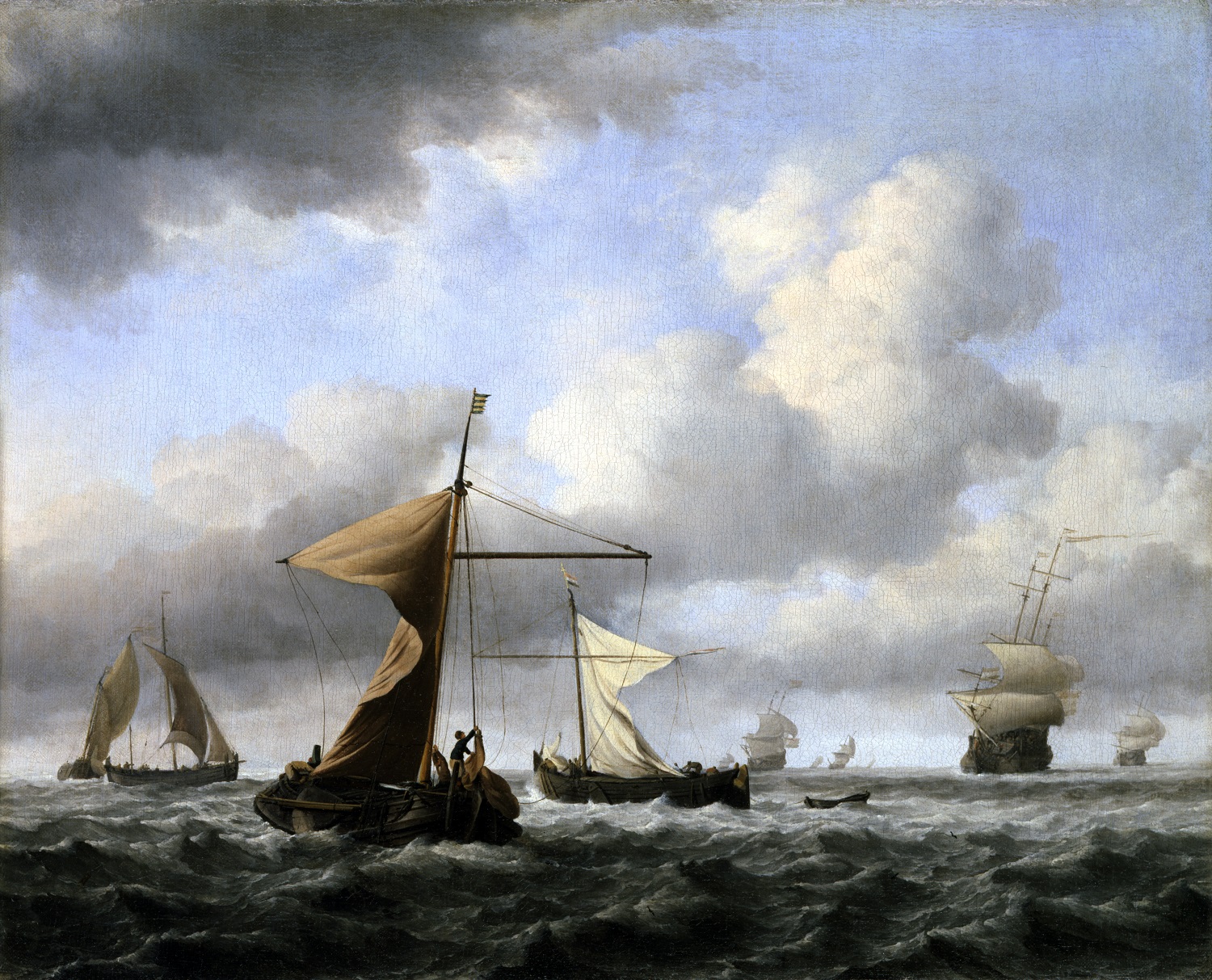Artists in Amsterdam, Dulwich Picture Gallery review - a slight but evocative sketch | reviews, news & interviews
Artists in Amsterdam, Dulwich Picture Gallery review - a slight but evocative sketch
Artists in Amsterdam, Dulwich Picture Gallery review - a slight but evocative sketch
Amsterdam was Europe's economic hub in the 17th century, a fact reflected in its art

Done well, a one-room exhibition can be the very best sort, a small selection of paintings allowing the focused exploration of a single topic without the diluting effect of multiple rooms and objects.
Even so, Dulwich Picture Gallery’s display is not without its merits, and it uses eight works from its extensive collection of Dutch paintings, plus one loan, to sketch an evocative, if slight impression of artistic life in 17th-century Amsterdam. Made by five artists, the works attest to the city’s remarkable rise during the Dutch Golden Age. Its population doubled between 1600 and 1670, and as Europe’s new economic centre it drew artists from all over the Low Countries, keen to seek their fortune in a buoyant, wealthy art market.
 One such artist was Adam Pynacker, whose travels in Italy inspired the modestly-sized Bridge in an Italian Landscape, c. 1652-54. When Pynacker settled in Amsterdam in 1661, he adjusted his output to satisfy his nouveau riche clientele, the large-scale hunting scene that forms the exhibition’s centrepiece a rather more forceful expression of wealth and status (main picture: Landscape with Sportsmen and Game, c.1665). A leisure activity associated with the gentry, hunting communicated the social ambitions of the new mercantile classes, while invoking traditional pastoral scenes that implied a learned familiarity with classical civilisation. At heart, though, it is staunchly, proudly Dutch: a weirdly miniaturised still life of dead game occupies the middle ground, a Dutch speciality that imbues earthly abundance with a melancholy acknowledgement of its transient nature.
One such artist was Adam Pynacker, whose travels in Italy inspired the modestly-sized Bridge in an Italian Landscape, c. 1652-54. When Pynacker settled in Amsterdam in 1661, he adjusted his output to satisfy his nouveau riche clientele, the large-scale hunting scene that forms the exhibition’s centrepiece a rather more forceful expression of wealth and status (main picture: Landscape with Sportsmen and Game, c.1665). A leisure activity associated with the gentry, hunting communicated the social ambitions of the new mercantile classes, while invoking traditional pastoral scenes that implied a learned familiarity with classical civilisation. At heart, though, it is staunchly, proudly Dutch: a weirdly miniaturised still life of dead game occupies the middle ground, a Dutch speciality that imbues earthly abundance with a melancholy acknowledgement of its transient nature.
Less showy, but just as redolent of time and place, are two small seascapes by Willem van de Velde (pictured above right: A Brisk Breeze, c.1665), who, like his father before him, specialised in maritime paintings. Such paintings held a particular appeal for a seafaring nation, made wealthy through trade, and Van de Velde had plenty of clients among Amsterdam merchants. To modern eyes, such scenes are familiar from the domestic interiors of Vermeer and de Hooch, who placed seascapes on parlour walls to provide narrative subtext by suggesting emotional turbulence, or an absent lover or husband.
Artists came and went no more or less than any other members of Amsterdam’s working population. Several of the five featured artists had careers that took them all over Europe, but Jacob van Ruisdael’s paintings of his native Haarlem are a reminder that in the 17th century even short distances were significant. Having moved 12 miles away to Amsterdam in order to pursue his career, Ruisdael’s quaintly rustic depictions of Haarlem transport him – and us – to a different world altogether.
- Artists in Amsterdam at the Dulwich Picture Gallery until 12 January 2020
- More visual arts reviews on theartsdesk
rating
Explore topics
Share this article
The future of Arts Journalism
You can stop theartsdesk.com closing!
We urgently need financing to survive. Our fundraising drive has thus far raised £49,000 but we need to reach £100,000 or we will be forced to close. Please contribute here: https://gofund.me/c3f6033d
And if you can forward this information to anyone who might assist, we’d be grateful.

Subscribe to theartsdesk.com
Thank you for continuing to read our work on theartsdesk.com. For unlimited access to every article in its entirety, including our archive of more than 15,000 pieces, we're asking for £5 per month or £40 per year. We feel it's a very good deal, and hope you do too.
To take a subscription now simply click here.
And if you're looking for that extra gift for a friend or family member, why not treat them to a theartsdesk.com gift subscription?
more Visual arts
 'We are bowled over!' Thank you for your messages of love and support
Much-appreciated words of commendation from readers and the cultural community
'We are bowled over!' Thank you for your messages of love and support
Much-appreciated words of commendation from readers and the cultural community
 Folkestone Triennial 2025 - landscape, seascape, art lovers' escape
Locally rooted festival brings home many but not all global concerns
Folkestone Triennial 2025 - landscape, seascape, art lovers' escape
Locally rooted festival brings home many but not all global concerns
 Sir Brian Clarke (1953-2025) - a personal tribute
Remembering an artist with a gift for the transcendent
Sir Brian Clarke (1953-2025) - a personal tribute
Remembering an artist with a gift for the transcendent
 Emily Kam Kngwarray, Tate Modern review - glimpses of another world
Pictures that are an affirmation of belonging
Emily Kam Kngwarray, Tate Modern review - glimpses of another world
Pictures that are an affirmation of belonging
 Kiefer / Van Gogh, Royal Academy review - a pairing of opposites
Small scale intensity meets large scale melodrama
Kiefer / Van Gogh, Royal Academy review - a pairing of opposites
Small scale intensity meets large scale melodrama
 Jenny Saville: The Anatomy of Painting, National Portrait Gallery review - a protégé losing her way
A brilliant painter in search of a worthwhile subject
Jenny Saville: The Anatomy of Painting, National Portrait Gallery review - a protégé losing her way
A brilliant painter in search of a worthwhile subject
 Abstract Erotic, Courtauld Gallery review - sculpture that is sensuous, funny and subversive
Testing the boundaries of good taste, and winning
Abstract Erotic, Courtauld Gallery review - sculpture that is sensuous, funny and subversive
Testing the boundaries of good taste, and winning
 Edward Burra, Tate Britain review - watercolour made mainstream
Social satire with a nasty bite
Edward Burra, Tate Britain review - watercolour made mainstream
Social satire with a nasty bite
 Ithell Colquhoun, Tate Britain review - revelations of a weird and wonderful world
Emanations from the unconscious
Ithell Colquhoun, Tate Britain review - revelations of a weird and wonderful world
Emanations from the unconscious
 Rachel Jones: Gated Canyons, Dulwich Picture Gallery review - teeth with a real bite
Mouths have never looked so good
Rachel Jones: Gated Canyons, Dulwich Picture Gallery review - teeth with a real bite
Mouths have never looked so good
 Yoshitomo Nara, Hayward Gallery review - sickeningly cute kids
How to make millions out of kitsch
Yoshitomo Nara, Hayward Gallery review - sickeningly cute kids
How to make millions out of kitsch
 Hamad Butt: Apprehensions, Whitechapel Gallery review - cool, calm and potentially lethal
The YBA who didn’t have time to become a household name
Hamad Butt: Apprehensions, Whitechapel Gallery review - cool, calm and potentially lethal
The YBA who didn’t have time to become a household name

Add comment